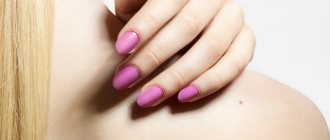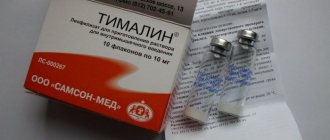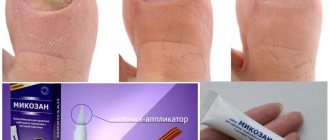Dermatological pathologies cause physical and psychological discomfort to patients and cause the development of self-doubt. Particularly unpleasant manifestations are warts, papillomas and other skin growths that cause inconvenience in everyday life. Today, it is not necessary to visit a clinic to eliminate minor defects; it is enough to purchase the necessary product at the pharmacy, for example, Verrukacid.
Release form and composition
The drug is available in the form of an oily liquid solution with a phenol odor and may have various shades of brown.
The content of the main active components in one gram of Verrucacid is:
- Phenol 588 mg;
- Metacresol 392 mg.
Excipients: ethanol 95%, purified water.
The drug is supplied to the pharmacy chain in dark glass bottles of 2 and 10 g, complete with applicators in cardboard packs.
Briefly about the drug
In the photo: the drug verrucacid in a bottle
Ferezol - the “first version” of verrucacid
- Verrukacid in translation means: verruca - wart, cid - to destroy
- Composition of the drug: phenol and metacresol.
- Feresol is a previous version of verrucacid. Composition of feresol: phenol and tricresol. Currently not produced and not sold in pharmacies.
- How does Verrukacid work? Phenol and metacresol cause protein coagulation, which means necrosis (necrosis) of skin cells. As a result, the wart shrinks, crusts over and dies.
- Appearance (photo above): glass bottle - 2 g of the drug. A cap with an applicator, like a sample perfume.
- Pungent smell of phenol.
- Verrucacid is always a solution. Ointment "verrukacid" - this drug is not available.
Directions for use and dosage
Verrucacid is applied strictly to the problem area of the skin with an applicator or a thin wooden stick, without affecting the healthy and mucous surface.
Removal of dense warts, dry calluses, keratomas requires preliminary sanitation of the surface associated with the removal of horny layers. It is recommended to do this by applying applications with keratolytic ointment to the areas of the rash. After a few hours, remove the bandage and steam the skin in soapy water with the addition of baking soda. Well-soaked horny layers must be carefully removed, thoroughly dry the skin and proceed to the direct use of Verrucacid.
To achieve a therapeutic effect, the frequency of application of the drug is for:
- Filiform warts and small papillomas - once;
- Warts 2-4 mm in size and large papillomas - four times with the time interval necessary for the previous layer to dry;
- Plantar warts and on the hands - up to ten times with breaks of three minutes;
- Keratomas and dry calluses - four times every three minutes;
- Each element of genital warts - twice with a break for complete drying, but this removal is recommended only in a medical institution with the participation of a dermatovenerologist.
According to the instructions for Verrukacid, up to five procedures are allowed with an interval of at least six days, after the crust peels off on its own.
To safely apply the drug to the healthy surface of the skin around the lesion, it is recommended to apply zinc paste.
Contraindications
- Not for children under 7 years old.
- You cannot treat skin over an area of more than 20 square centimeters.
- Do not lubricate mucous membranes and lips.
- Treatment on the face is not recommended (it is advisable that only a doctor do this).
- Moles and nevi should not be lubricated to prevent their growth and development into cancer.
Pregnant and lactating women
Pregnant women - absolutely not allowed; Breastfeeding people - not allowed on the chest or on the arms. Other parts of the body are fine.
special instructions
Treatment with Verrucacid requires special care and precision. When working with the drug, do not allow it to come into contact with healthy areas of the skin, the mucous surface, especially the eye membranes. In case of contact with skin, blot it without rubbing, treat the area with an alcohol-containing liquid, and rinse thoroughly with warm water and soap. If the drug gets into your eyes, rinse them thoroughly with water and consult a doctor.
Problem areas of skin treated with Verrucacid should not:
- Leave without access to air (any bandages are strictly prohibited);
- Lubricate with cream or ointments;
- Wet it on the first day after applying the drug.
To prevent burns to healthy skin, it is not recommended to use the drug to remove skin formations located in the groin folds, anal area, and areas between the fingers.
According to the instructions, the drug does not leave scars, provided that all treatment rules are followed and there is no mechanical removal of the crust.
Side effects
1) Verrucacid may cause skin burns.
What to do:
- Immediately absorb excess solution with a cotton pad,
- pour vodka on the burn site (vodka dissolves Verrucacid better than plain water),
- rinse with plenty of warm water,
- dry the skin
- treat the burn area with Olazol or Panthenol aerosol for several days.
2) An allergic reaction in the form of rashes on distant areas of the skin that were not treated with Verrucacid.
What to do:
- take antiallergic drugs orally (Cetrin, Suprastin, etc.),
- if indicated, use antiallergic ointments locally.
3) Redness of the conjunctiva of the eyes. It is rare, only when used on the face. It goes away on its own.
What happens to papilloma?
The medicinal substance Verrukacid contains strong substances that affect the structure of the skin, namely the cells that are susceptible to infection by the papilloma virus.
The effect of the drug on the protein compounds of cells contributes to their further gradual death, due to which the papillomas are removed. Necrosis remains at the site of the papilloma, thereby reducing the likelihood of recurrence of papilloma.
Proper use of Verrucacid helps eliminate almost all types of viral skin lesions that contribute to the formation of papillomas and other types of skin formations.
After removal of the papilloma, rapid skin regeneration occurs due to which no traces remain at the site of the papilloma.
Analogs
All cauterizing and locally necrotizing drugs:
- Feresol. This is a full-fledged analogue of verrucacid, containing higher concentrations of phenol and tricresol. Unlike feresol, verrucacid has a lower dosage of these substances. This means that the degree of skin burn is less, and in the future there will be no rough scars left on the skin. Therefore, the pharmaceutical company decided to abandon the production of Feresol.
- Dufilm. The cauterizing effect is mild. Instructions for use of duofilm.
- Collomak. Also has a mild cauterizing effect. Instructions for Collomak.
- Super clean. A set of strong alkalis, which also cause severe chemical burns to the skin and a noticeable scar afterwards. Read detailed instructions for the super cleaner.
- Solcoderm (more about Solcoderm)
- Condilin (read about condilin)
Patient reviews
I used Verrucacid to remove a wart on my hand. It was recommended to me by a friend who successfully removed several papillomas in the neck area. Before use, I decided to consult a specialist. The doctor approved this method after examining the growth and told me to come back for an appointment after the scab fell off. It was enough for me to apply the medicine 4 times with an interval of 3 minutes. After a few days, the wart significantly decreased in size, and after 10 days it completely disappeared. A small scar formed in its place. The doctor said there were no complications. I'm happy with the result.
Marina
A specialist prescribed Verrukacid for me to remove dry calluses on my feet. Other remedies did not bring results, so I had to turn to this medicine. The doctor said that today this remedy is the most effective and safe. The calluses were extensive and the skin was rough. Processed 5 times each with an interval of 4 minutes. After 5 days, the keratinized areas simply peeled off. The skin at the site of the calluses was sensitive for several days. I was pleased with the effect of the solution; there were no complications.
Konstantin
Papillomas on my neck brought me significant discomfort for several months.
I contacted a dermatologist, who said that the growths were benign and could be removed using Verrucacid solution. There were 4 papillomas on the neck, the doctor allowed them to be treated at the same time. I applied the medicine 3 times with an interval of 5 minutes. After treatment, I felt a slight burning sensation, healthy skin turned red, but after a while all the symptoms disappeared. Dry papillomas disappeared after 7 days, no scars remained. More than 2 years have passed, no new growths appear. Valery
Treatment prognosis and contraindications for use
Despite the effectiveness of the medicine, there are contraindications. Restrictions apply to age, nature, location of education. These include:
- It is forbidden to use the medicine in children under 6 years of age, the epithelium is thin and delicate, and the medicine causes severe burns and scars;
- It is not recommended to use the medicine around the lips, mucous membrane, there are significant differences in the structure of the integument. The aggressive effect of the drug causes non-healing ulcers;
- do not use the medicine on pigmented nevi, the negative effect of the composition causes degeneration into melanoma;
- in the presence of papillomatosis (extensive distribution of papillomas), it will lead to an extensive burn if each growth is cauterized separately;
- allergic reaction to the components of the drug.
If treated correctly, there will be no traces or burns on the skin from the effects of the drug; it effectively eliminates unwanted formations. If, after burning off warts or papillomas, new ones appear nearby, you may need to be additionally treated with antiviral and immune drugs. The solution is ineffective in cases of reduced immunity and extensive growth of growths on the skin.
The article has been reviewed by the site editors
Price
Important! You can check the price information at your nearest pharmacy. The instructions show average prices across the country.
Price formation is influenced by many factors, among which are the purchase price, the costs incurred by the company when transporting the goods, as well as the pharmacy’s markup. It is also important to consider that depending on the country, the price can vary significantly. Such jumps in price can be explained by the exchange rate and currency.
In Russia, you will have to pay an average of 187 rubles for this product.
In Ukraine, for Verrukatsid you need to pay from 56 to 87 hryvnia.
Why do papillomas appear?
The appearance on the human body of formations that are caused by a papilloma viral infection is called a papilloma growth. Very often, many people do not immediately notice the appearance of such a growth, since in most cases this formation may not cause any discomfort.
Most often, the appearance of such formations can occur for the following reasons:
- Frequent promiscuity and constant change of sexual partners;
- Abuse of bad habits;
- Decreased protective functions of the body;
- Disease of the digestive organs;
- Lack of proper personal hygiene.
The presence of such a virus can be transmitted to a newborn baby from the mother. Papilloma can manifest as either a small formation or damage to large areas.
Most often, papilloma has the appearance of a wart, from light pink to brown.
Indications
The drug is used for the following skin diseases:
- Warts of various etiologies and types - flat, ordinary;
- Neoplasms caused by the human papillomavirus - actual papillomas and genital warts;
- Actinic keratosis is a skin disease that occurs when exposed to direct sunlight on exposed areas of the body;
- Dry calluses - on the soles of the feet, on the back of the hands, and so on.
The drug can be used independently according to the instructions in the presence of warts and calluses, however, verrucacid for papillomas and genital warts should be used after consulting a doctor who will prescribe this drug.
Pharmaceutical research and production enterprise
Registration number:
P N001835/01.
Trade name:
Verrukacid®.
INN or group name:
phenol, metacresol.
Dosage form:
solution for external use.
Compound:
- Active ingredients:
phenol – 588 mg, 3-methylphenol (metacresol) – 392 mg. - Excipients:
ethyl alcohol (ethanol) 95% - 10 mg, purified water up to 1 g.
Description:
mobile oily liquid from pinkish or light yellow to brown with the smell of phenol.
Pharmacotherapeutic group:
local necrotizing agent.
ATX code
(D11AF).
Pharmacological properties
It has a cauterizing effect and coagulates skin proteins.
Indications for use
Common, filiform and plantar warts, papillomas, genital warts of the skin, dry calluses, keratomas.
Contraindications
Increased individual sensitivity to the components of the drug. Pigmented nevi (moles), rashes located on the red border of the lips and mucous membranes. Do not apply the drug to the skin surface area of more than 20 cm2. Children under 7 years old.
Pregnancy and lactation period
The use of the drug is possible in cases where the expected benefit to the mother outweighs the potential risk to the fetus or child. During lactation, it is not recommended to remove formations located on the mammary glands and hands.
Directions for use and dosage
Verrukacid® is intended for external use only.
The drug is applied accurately
onto the treated area with a special applicator or a small thin wooden stick, avoiding it coming into contact with adjacent healthy areas of skin and mucous membranes. For small papillomas (up to 2 mm in size) and filamentous warts, Verrukacid® is applied once. Larger papillomas and small warts (2-3 mm in size) are smeared with the drug 3-4 times, taking breaks to allow the applied liquid to dry.
Before removing warts with a dense keratinized surface on the hands, plantar warts, keratomas, and dry calluses with Verrucacid®, it is necessary to remove horny layers from their surface. To do this, apply a keratolytic ointment (for example, 10% salicylic or other) for several hours, covering the lubricated area with compress paper or plastic film, and then use a gauze bandage. Possible sealing with adhesive tape. After this, the bandage or adhesive plaster is removed, the skin is steamed in hot water with the addition of soap and soda for 10-15 minutes and the horny layers are removed (cut off with nail scissors or tongs). Verrukacid® is applied to dried skin several times, taking 3-4 minute breaks to allow the drug to dry.
Warts on the hands and soles are treated with Verrukacid® 7-10 times with an interval of 3-4 minutes.
It is enough to treat keratomas and dry calluses 3-4 times with an interval of 3-4 minutes.
If it is necessary to apply the drug repeatedly, in order to avoid burns to the surrounding skin, it is advisable to lubricate it with zinc paste. The paste is removed with a dry gauze swab after the last portion of Verrukacid® has dried.
It is not recommended to remove genital warts yourself; they are treated with Verrucacid® in the treatment room of the clinic by a dermatovenereologist or urologist. The drug Verrukacid® is applied to each element separately 1-2 times with an interval of 3-4 minutes.
Repeated treatment, if necessary, is carried out 6-8 days after the crust falls off. 4-5 procedures are allowed.
Side effects
Burn (in case of contact with healthy skin). If the drug accidentally comes into contact with healthy skin, it is necessary to immediately, carefully, without rubbing, remove it from the skin, and then treat the affected areas with 10-40% ethyl alcohol or alcohol-containing liquids (vodka, lotion, cologne) and wash thoroughly with warm water and soap. If a burn occurs, it is recommended to use anti-burn and healing agents.
Swelling and redness of the skin when applied to the eye area, which goes away on its own.
Allergic reactions.
Overdose
Not identified.
Interaction with other drugs
The components of the drug easily dissolve in the ointment base, and therefore it is not recommended to lubricate the skin area treated with Verrucacid® with any ointments.
special instructions
Do not allow the drug to come into contact with mucous membranes, especially the mucous membrane of the eyes. In case of contact, immediately rinse eyes with plenty of water and consult an ophthalmologist.
It is unacceptable to bandage the areas treated with the drug, seal them with a plaster, lubricate them with any ointments and remove the crust; Do not reapply the drug before the dates indicated above. Clothing made of synthetic fabrics should not touch the area of skin treated with the drug.
It is not recommended to apply Verrucacid® to formations located in skin folds (inguinal folds, anal area, interdigital spaces, etc.) and heavily sweating areas in order to avoid burns to unaffected skin of the contacting surface or as a result of the drug spreading over wet skin.
The area of skin treated with Verrucacid® must be air-dried; it must not be lubricated with any ointments or washed with water on the first day after treatment.
When used correctly, the drug does not leave scars.
Particular care and caution is required when treating children with the drug.
Release form
Solution for external use in dark glass bottles with and without applicator, 2 and 10 g.
Each bottle, along with instructions for medical use, is placed in a cardboard pack.
Additionally, each cardboard pack can include a plastic lid with an applicator.
Storage conditions
In a place protected from light at a temperature of 15 to 25 ° C.
Keep out of the reach of children.
Best before date
5 years. Do not use after expiration date.
Conditions for dispensing from pharmacies
Dispensed without a prescription.
Pharmacological properties
Verrukacid solution has a cauterizing and mummifying effect. When contacted with the skin, phenol and metacresol act on pathological growths , provoking necrosis of these areas.
Due to the ability to penetrate into cells, the active ingredients quickly dissolve them, and after a few days the neoplasm peels off from the healthy epidermis. The antiseptic effect helps prevent infection of the resulting wound and accelerate the process of tissue regeneration.
The speed of healing largely depends on the individual characteristics of the body and the age of the patient. It is worth noting that the solution has a negative effect on healthy skin, so if it comes in contact with it, negative reactions are possible.
Additionally, the medication destroys viruses and fungi, which often parasitize the skin, aggravating the patient’s condition. This action is carried out due to the ability to coagulate proteins of pathogenic microorganisms, which leads to death.
The solution almost does not penetrate into the systemic circulation, which minimizes the risk of side effects. The active components also do not penetrate the placental barrier, but this does not make the medicine safe for use in the treatment of pregnant women. Due to the insignificant absorption of the drug into the blood, there is no data on its removal from the body. Even when penetrating into the systemic bloodstream, the medication does not have a significant effect on the functioning of internal organs.
Doctors' opinions on the most effective methods of treating warts and papillomas
The chief physician of Moscow City Hospital No. 62 describes his vision on this matter. Anatoly Nakhimovich Makhson Medical practice: more than 40 years.
“I have been treating people’s papillomas and warts for many years. I’m telling you as a doctor, papillomas along with HPV and warts can really lead to serious consequences if they are not dealt with.
The human papillomavirus is present in everyone on whose body there are papillomas, moles, warts and other pigmented formations. According to rough estimates, 80-85% of the planet's population has it. By themselves they are not dangerous. The problem is that an ordinary papilloma can become melanoma at any time.
These are incurable malignant tumors that kill a person in just a few months and from which there is no salvation.
Unfortunately, in Russia and the CIS countries, pharmaceutical corporations sell expensive medications that only relieve symptoms, thereby hooking people on one drug or another. That is why in these countries there is such a high percentage of cancer diseases and so many people suffer from “non-working” drugs.
The only drug that I want to recommend, and it is also officially recommended by WHO for the treatment of papillomas and warts, is Papinol. This drug is the only remedy that has an effect not only on external factors (that is, it removes papillomas), but also acts on the virus itself. At the moment, the manufacturer has managed not only to create a highly effective product, but also to make it accessible to everyone. In addition, within the framework of the federal program, every resident of the Russian Federation and the CIS can receive it for 149 rubles.”
To find out more, read this article.
Advantages of the product
There are a large number of drugs for removing papillomas and other skin defects, however, Verrukacid has the following advantages:
- The medicine begins to act from the first day of use;
- Most often, papilloma disappears within a few days;
- The skin tissue is practically not injured;
- The product is highly effective;
- After use, there are no scars left at the site of formation.
When used correctly, the procedure is painless.



